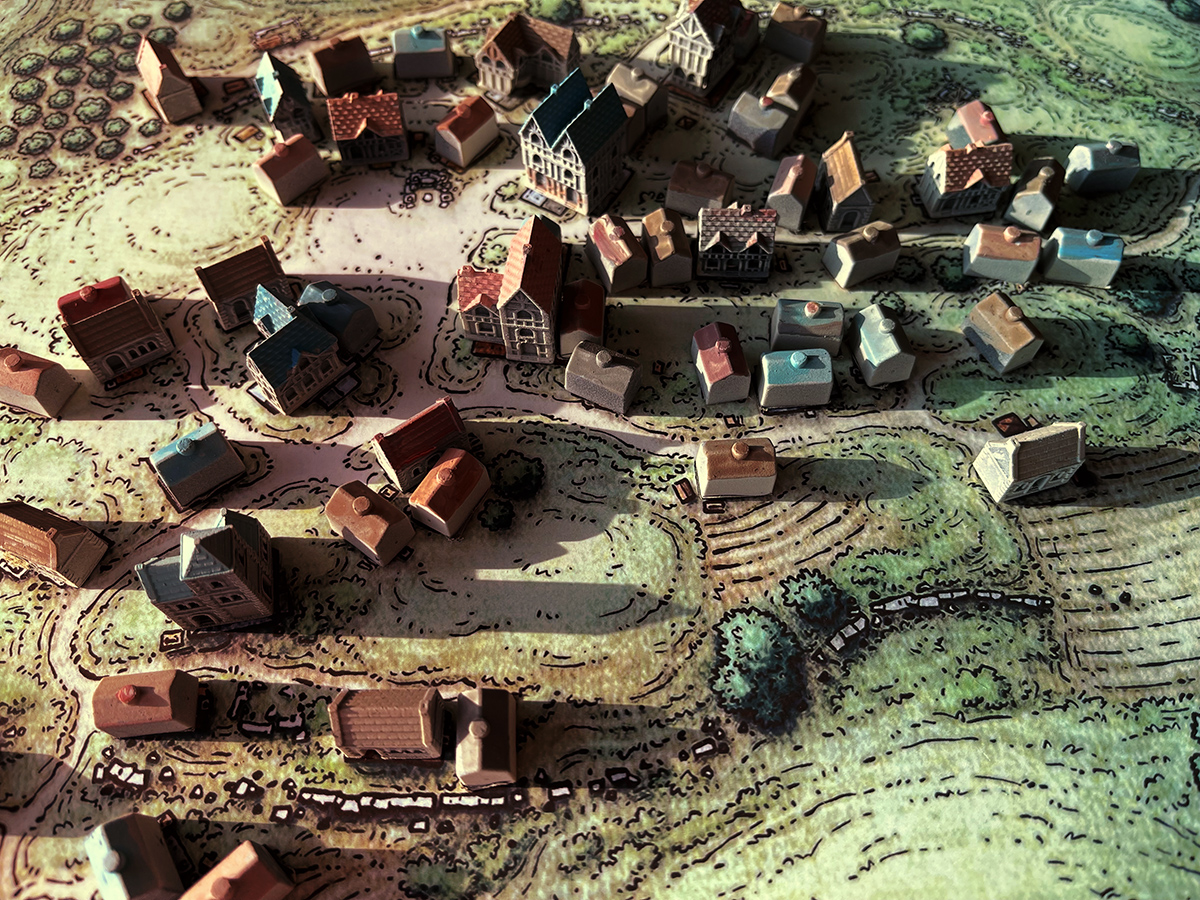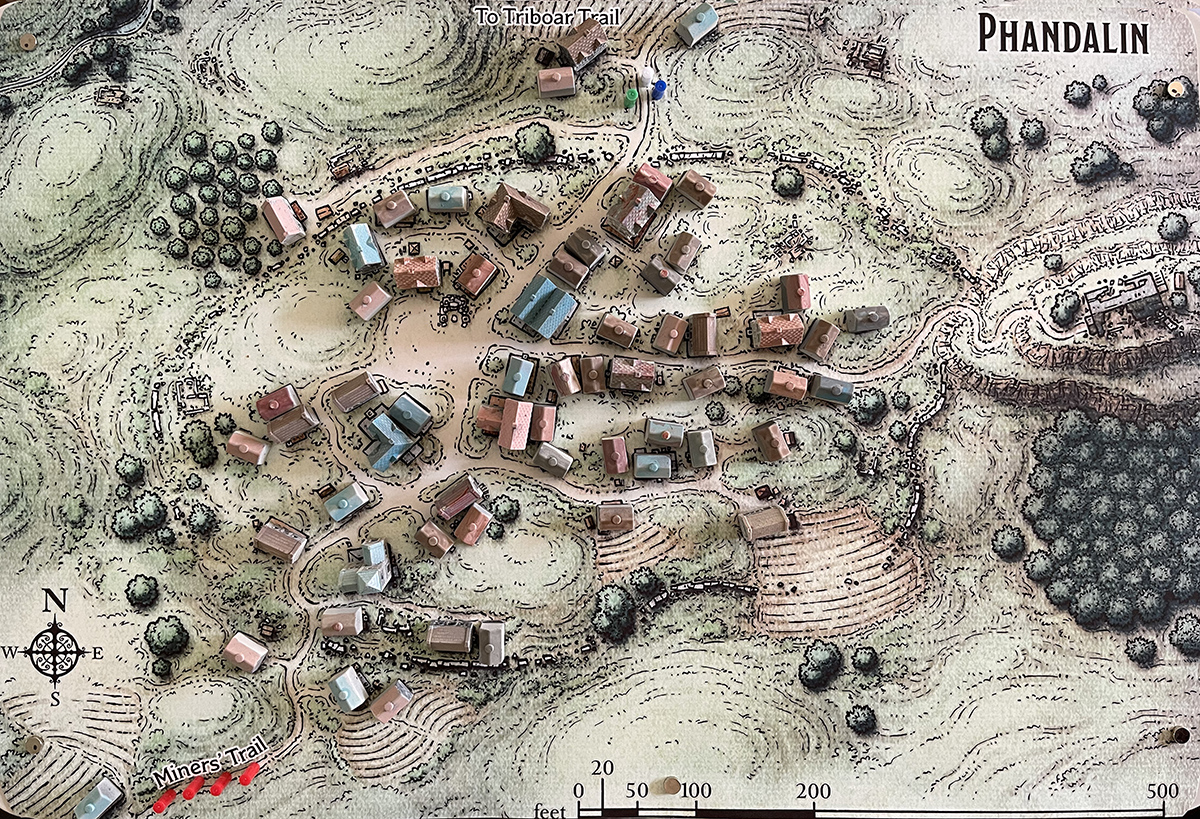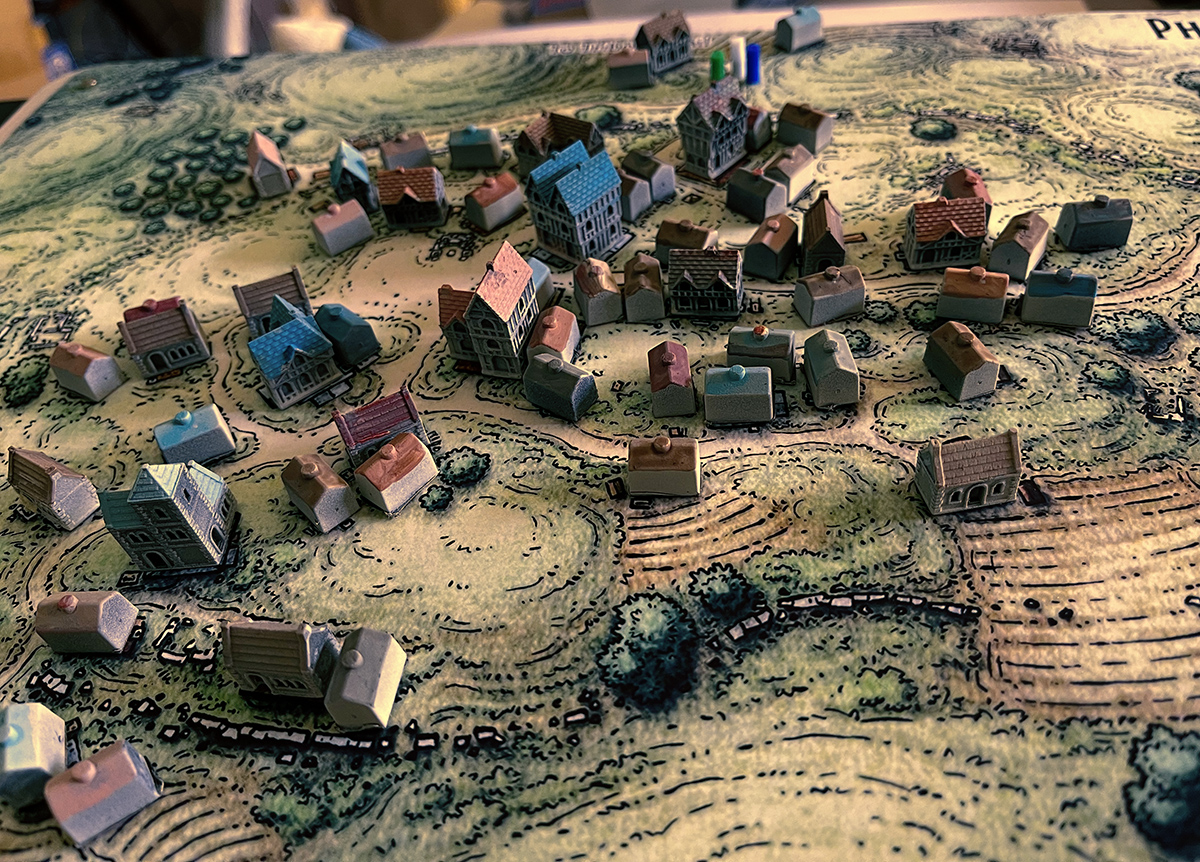Meet Karl, an angry NPC you can drop into your 5e game
April 20, 2022
I've been working on a group of fun, angry, strange, unhinged, and deceptively kind NPCs, each with their own full-sized portrait. The idea is that sometimes you want an NPC that's a bit off or weird or antagonistic. Here's one—right-click to view the image in a new tab, and then DOWNLOAD the PDF.
The theme with Karl is the curse of the sea—a long and violent relationship with storms and eternal tides, torn sails and frayed rigging, broken bones and the nightmare voices of the drowned dead. He's an old sailor with a bit of power who's been betrayed by everyone he counted dear. And he probably doesn't like the way you're looking at him...

Hit Points in Dungeons & Dragons 5th Edition
February 21, 2022
In Dungeons & Dragons 5th Edition, hit points are nominally tied to physical damage—or symbolically tied might be more accurate. For example, let's say your 3rd level Warlock with 24 hit points takes seven points of damage. This does not mean the Warlock suddenly loses three pints of blood or three fingers. In this world's reality, which means in the fiction of the game, the result of that seven points of "damage" coming off the top of a fully rested 24-point high-Charisma Warlock might only be a bruised ego. But to that character, who has self-confidence through the roof, an unexpected seven point loss can be devastating. Losing seven hit points will shake the ego, morale, arrogance of many characters—especially if they depend on these to remain standing. There may be a little blood spilled, maybe a minor wound, but that is created in the fiction for a particular character, adversary, and combat encounter, and remains in the fiction. And right in line with this, a Barbarian with 42 HP will probably shrug off seven points of damage with a laugh. A little blood between enemies just makes a good story later at the pub. In the fiction of the game, that seven point damage roll might also be a bruised ego, but to the Barbarian—with unshakable courage, the response could be to acknowledge the damage, nod appreciatively, and say, "Oh, so we're hitting each other now? Here, let me show you how to hit someone." Same seven points of damage, different response.
Since hit points (HP) do not correspond to physical damage in D&D 5e, with blood and scars or loss of fingers and ears, if you are tracking debilitating wounds and organ damage, or corruption and insanity in your game, then I think those should affect the character's actual stats, in the reduction of Strength, Intelligence, Charisma, etc. Your stats and associated ability modifiers represent your character's somewhat permanent capabilities—how much you know, how much force you can put into that axe swing.
Your character's hit points, on the other hand, represent courage, flexibility, luck, inner strength, and the ingrained fighting or evasion skills they can bring to bear to evade a killing blow. HP is a resource that can go up and down a thousand times in the course of a long campaign, which would be impossible if hit points simply represented your character's physical body, and loss of HP meant physical impairment, internal bleeding, infection, organ damage, bones broken or crushed. There wouldn't be anything left of your Warlock by the time they reached the 4th level. If they even make it that far. A character only has ten fingers to go around (most humanoids anyway) and the loss of more than a few can permanently limit their ability to fight with many weapons.
HP is obviously tied to character death in the rules, but that final killing strike only comes after you've exhausted all hit points. Up to that point, even with a single hit point left, you're still in the game, with your full capabilities—your +6 Strength, Charisma, Wisdom, etc. This is also why a dragon can have hundreds of hit points. They are just that difficult to break, that difficult to bring to the point where they give up physically and mentally. A dragon reduced to zero hit points or lower might be "dead", but more importantly, their resolve has been broken, they are broken in spirit, or terror-stricken. This obviously goes for your player characters too, and that's why they are not beyond reviving in some cases. In the fiction, it's possible for your character to have zero hit points and not have a scratch on them.
Okay, that's basically it, there can be physical aspects of the hit point mechanic in 5e, but I think most of it is comprised of less tangible components, like fortitude, the confidence of years of training and combat experience, even arrogance. HP can represent just how badass you think you are, even if you're not as dextrous or charismatic in reality. How much of a high-level Bard's hit points is made up of unabashed pompousness? In some it's quite a bit—same goes for that dragon. And during combat it is your foe's fortitude and well of confidence after years of training you are eroding when your Sword of Uprightness lands skillfully and you do 21 points of damage. In the fiction of the game you may have only twisted past their defenses and given them a good scratch across the cheek, but the point is that it's so devastating a blow to the faith in their fighting abilities that their hit points just took a nose dive. Mechanically, you and your sword cut their hit points in half. In the fiction, you can see them step back from the fray, raise a hand to touch their cheek and come away with blood on their fingers—and then you see that sudden look of horror in their eyes when they realize this isn't going to end as easily as they thought it would.
That is what I'm measuring with hit points in D&D.
Note: this is also perfectly consistent with hit point recovery during short and long rests.
More info on HP:
Tim Kask - The Curmudgeon in the Cellar YT1 https://youtu.be/jhFjo_mFuIo?t=31
Matt Colville - Let's Kill A PC! https://youtu.be/xZdS8lP-Sdo
Magic, the Three-Worlds Interpretation
August 15, 2021
A teaser page from a Book of Seaborn Lore I'm creating, mostly from the perspective of the fictional lore master himself, Michael Henderson. This is part of a long-running game design project I have going.

NPC: Seaborn Witch (Arkheanassa of House Dosianax)
August 12, 2021
I'm working on some Seaborn NPCs for D&D 5e with detailed stat blocks, magic, actions, and more. Here's Arkheanassa of House Dosianax, a fifth level sorcerer with some pretty dangerous powers.

Add another dimension to your city and village maps
August 8, 2021
I was going to run Waterdeep - Dragon Heist a while back—It didn’t end up happening (probably start later this year), but along the way, while prepping for the adventure, I thought it would be cool to create a 3D-ish version of the area around the Yawning Portal, or the important sections of the Docks Ward. (I was also thinking it would be cool to build out a couple areas of Ankh Morpork).
I bought a $6 bag of replacement Monopoly houses, painted them with primer black and then did a zenithal highlight with Citadel’s very dramatic “Wraith Bone”, which is just what it sounds like, sort of a pale warm white. Magnets were the key. I’ve been using a 12x18 inch steel board to hold down maps and dungeon cards, with magnetic “push pins” to mark adventurers and monsters. So, I glued magnets into each of the buildings, printed a batch of larger, more detailed houses and buildings on the resin printer, and now I have the ability to construct some pretty interesting maps.
Models for tiny medieval city buildings:
https://www.thingiverse.com/thing:4575352
https://www.thingiverse.com/thing:4572067
300 PCS Premium Brushed Nickel Whiteboard Magnets
https://www.amazon.com/dp/B07XRNWZFQ
17.5" x 12" Magnetic Board
https://www.amazon.com/dp/B01KGS6M1Q

Our intrepid heros are standing around at the edge of Phandalin (middle, top) while bottom, left, a gnoll battle team is about to cause some trouble for the town's inhabitants:


Playing with the lighting:

Thinking about Theater of the Mind
August 7, 2021
So, I've been running nothing but theater of the mind with 5e lately, and just writing down some thoughts...
When you’re playing in theater of the mind mode, without a grid, and you’re using abstract distances—near, far, close, it might seem like you will eventually run into measurement problems or rule disputes because ranged weapon distances are exact, for example. Or if you’re playing with grids and minis, you may find yourself wondering how to resolve coverage issues when a spell area is spherical. Using your trusty AOE template you lay down the orange acrylic circle to show who’s in range, and that’s when the rogue says, “I use my reaction to squeeze into the far right corner of my grid square, just out of the arcing range of the fireball. It’s a little warm, singed a few tassels, but I’m good.”
Maybe treat the accuracy of the text that defines spell rules, capacity, and damage the same way you would treat the accuracy in a text from a world without standardized forms of measurement, or accurate language translation, a world without an established scientific method or commonly used experimental practices or processes.
The same goes for monsters, but with the additional complexity of organic growth, the varying effects of environmental and nutritional differences on development, and the fact that most creatures we’re going to meet will not be clones, perfect copies of the one monster whose magical abilities, combat skills, tastes, and responses were recorded for the stat block in the Monster Manual. A beholder’s central eye creates a 150-foot cone of antimagic, so it can be assumed that a long time ago, someone very bold got out a measuring tape and rolled it out until the magic started functioning. But the 150 feet that daring individual wrote down only applied to that one beholder. Why would it be assumed that every beholder has identical powers and identical range? This is the natural world, exceptions to every rule are common. --This is what's cool about the random beholder tables in Volo's!
This kind of thinking and testing the boundaries of the rules always makes me think of D&D being “infinitely flexible”: PHB page 5: “The DM determines the results of the adventurers' actions and narrates what they experience. Because the DM can improvise to react to anything the players attempt, D&D is infinitely flexible, and each adventure can be exciting and unexpected.”
And of course, that evoker or displacer beast isn't going to let you mark attack ranges in chalk on the dungeon floor. Instead, the first player to whip out a ruler will probably lose that arm up to the elbow. That’ll keep the adventure “exciting and unexpected.”